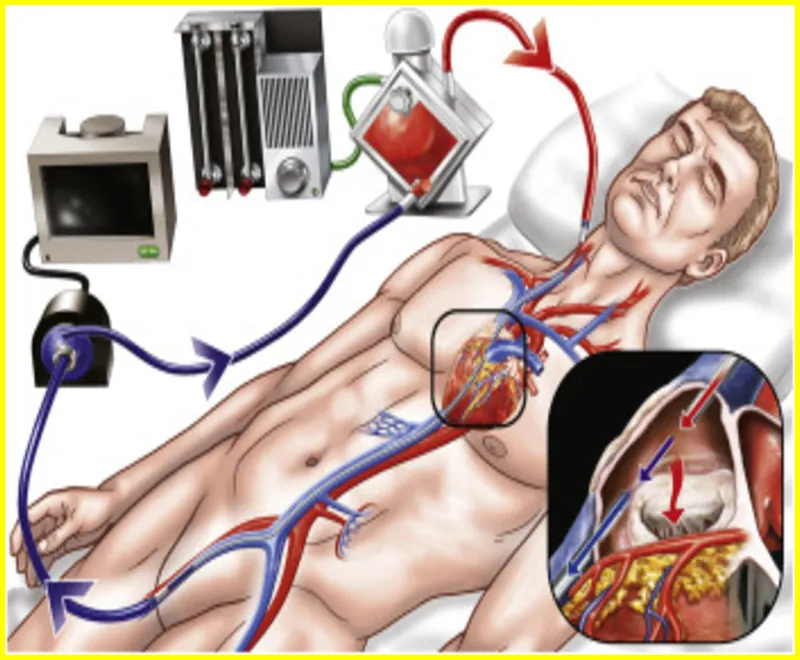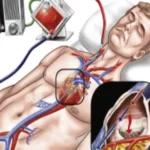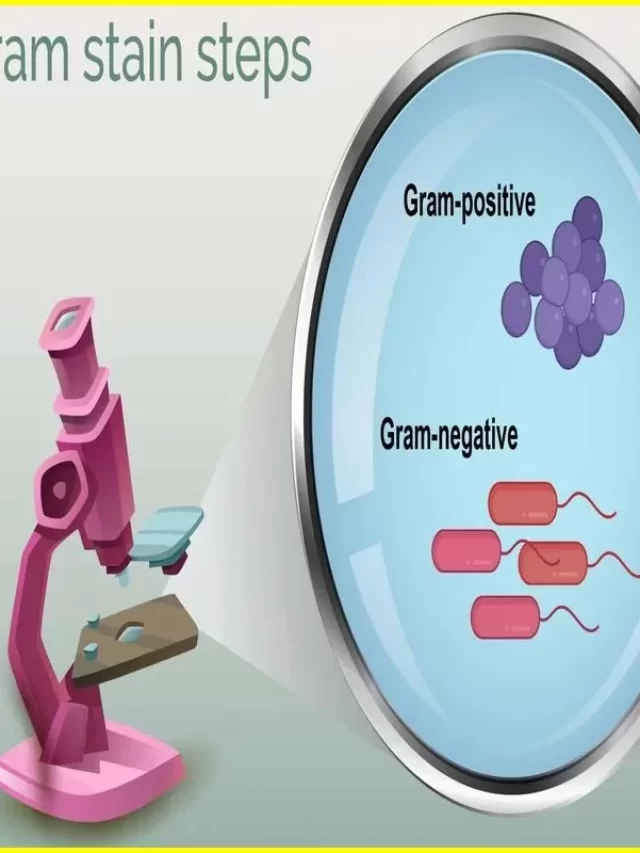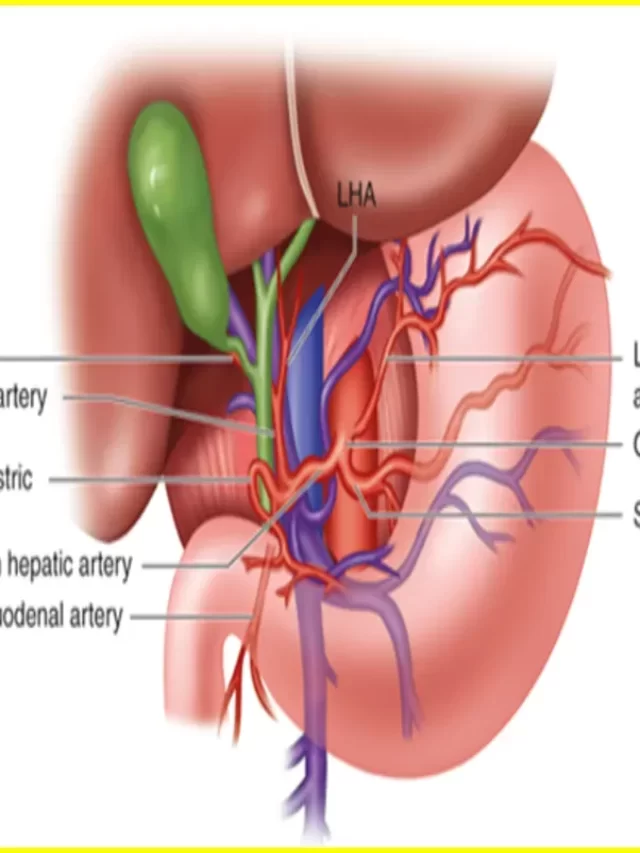ECMO Treatment
Extracorporeal Membrane Oxygenation is referred to as ECMO. It is a medical procedure that gives patients with severe respiratory or cardiac failure momentary assistance for their hearts and lungs. The way ECMO functions is by having a machine take over these organs’ functions so they can recover and rest.
Blood is taken from the patient’s body through a catheter as part of an ECMO therapy, and the blood is then run through an oxygenator, which serves as an artificial lung, and a pump, which functions as an artificial heart. Before reintroducing oxygen to the circulation, the oxygenator takes out carbon dioxide and infuses oxygen.
ECMO can be used in various situations, including:
- Respiratory Failure: It is employed when a patient’s lungs are severely damaged or unable to provide sufficient oxygen to the body. This can occur due to conditions such as acute respiratory distress syndrome (ARDS), pneumonia, or trauma.
- Cardiac Failure: ECMO may be used when the heart is unable to pump blood effectively due to conditions like severe heart failure, myocarditis, or complications following cardiac surgery.
When all other options have been exhausted, ECMO is usually the last option. It is used as a stopgap to allow the patient’s organs to heal. Depending on the health of each patient, ECMO therapy might last anywhere from a few days to several weeks.
A highly skilled medical staff and specialized equipment are needed for the difficult process known as ECMO. There are certain hazards involved, including bleeding, infection, and problems from using blood thinners. ECMO, on the other hand, can give patients suffering from severe cardiac or respiratory failure life-saving assistance under specific urgent circumstances.
What is the ECMO machine
ECMO treatment is a life-saving measure for patients with severe respiratory or cardiac failure. The ECMO machine pumps and oxygenates the patient’s blood, taking over the functions of the heart and lungs. ECMO treatment is often used as a last resort when all other options have been exhausted. While ECMO treatment is not without risk, it can be a lifesaver for patients who would not otherwise survive.
Article About:- Health & fitness
Article About:- Medical Technology
Article About:-Sports

Why do people need ECMO?
There are many reasons why people may need ECMO treatment. ECMO can be used to support patients with cardiac or respiratory failure, as well as those experiencing cardiac arrest.
ECMO provides oxygen-rich blood to the patient’s body and organs, which can help improve organ function and survival rates. ECMO is often used as a last resort treatment option when other treatments have failed.
Patients who receive ECMO treatment generally have a better chance of survival than those who do not receive this life-saving therapy.
How does ECMO work?
ECMO, or extracorporeal membrane oxygenation, is a life-support technique that takes over heart and lung function. ECMO is used to treat patients with acute respiratory failure or cardiac arrest.
ECMO treatment involves inserting catheters into the patient’s veins and arteries. These catheters are connected to an external pump that oxygenates the blood and circulates it back to the patient. The pump is usually powered by a motor or battery.
The ECMO machine can take over the functions of the heart and lungs, or just one of them. If both limbs are supported by ECMO, it is called veno-arterial (VA) ECMO. If only the lungs are supported, this is called veno-venous (VV) ECMO.
ECMO treatment is usually reserved for patients who have failed to respond to other forms of life support, such as mechanical ventilation. ECMO can be used for days, weeks or months at a time.
Patients receiving ECMO treatment must be closely monitored by a team of medical professionals. Complications from ECMO treatment are rare but can include bleeding, infection, and clotting.
What is the ECMO Process?
The ECMO procedure is a life-saving treatment for patients with heart or respiratory failure. ECMO stands for Extracorporeal Membrane Oxygenation. This treatment involves using a machine to take over the function of the heart and lungs. The machine pumps blood out of the patient’s body, oxygenates it, and then returns it to the patient’s body.
ECMO is used for patients who have failed other treatments such as mechanical ventilation. ECMO can be used as a short-term or long-term treatment. Short-term ECMO is commonly used for patients who are waiting for a heart transplant or other surgery. Long-term ECMO is used for patients who are not eligible for transplant or surgery.
The ECMO procedure can be performed in any hospital that has the necessary equipment and trained staff. The decision to start ECMO is made by a team of doctors, which includes cardiologists, pulmonologists, intensivists and surgeons. The patient should be fit enough to be taken to the hospital where ECMO will be performed.
Once at the hospital, the patient undergoes a surgical procedure to place cannulas (tubes) into the veins and arteries. These cannulas are attached to the ECMO machine. After this the patient is put on mechanical ventilation and sedated. Sedation is necessary because the patient cannot breathe on his own during ECMO.

Why is ECMO needed?
ECMO is a life support machine that does the work of the heart and lungs of critically ill patients. The machine pumps oxygenated blood through the body and removes carbon dioxide from the blood. ECMO can be used for short-term or long-term support.
ECMO is often used for patients who have suffered a heart attack, cardiac arrest, or respiratory failure. It is also used for newborns with congenital heart defects who need time to grow and develop before surgery can be performed.
ECMO can be a life-saving treatment for critically ill patients, but it is not without risk. Complications of ECMO include bleeding, infection, and organ damage. ECMO is also a very expensive treatment.
Who should get ECMO?
There is no definite answer to this question. Some of the factors that contribute to the decision to place a patient on ECMO include the severity of the patient’s illness, the likelihood of successful treatment with other less invasive methods, and the availability of resources.
In general, candidates for ECMO are very ill and have failed to respond to other forms of treatment. ECMO provides an alternative for patients who may not be able to be helped through any other means.
ECMO is usually used as a last resort when all other options have been exhausted. It’s important to remember that ECMO is not without risks and complications. As with any medical procedure, the decision to place a patient on ECMO should be made after careful consideration and consultation with an experienced medical team.
When should you get the ECMO machine?
When someone is experiencing heart or respiratory failure, their heart and lungs are unable to provide enough oxygen-rich blood to the body. This can be a fatal condition.
ECMO, or extracorporeal membrane oxygenation, is one treatment that can be used when a person is experiencing this type of failure. ECMO provides oxygenated blood to the body and takes over the function of the heart and lungs.
This treatment is generally used as a last resort when other treatments such as mechanical ventilation have failed. ECMO can be used for people of all ages, but it is most often used for infants and children.
There are two types of ECMO: venous-arterial (VA) ECMO and venous ECMO. VA ECMO is used when both the heart and lungs are failing. Venous ECMO is used when only the lungs are failing.
ECMO is not a cure for whatever is causing the cardiac or respiratory failure. However, it can keep someone alive until they are cured of the underlying condition or until a transplant can be performed.
If you or someone you know is experiencing heart or respiratory failure, talk with your doctor about whether ECMO may be right for you. ECMO Treatment.
ECMO Treatment/ Physician’s CHOICE Probiotics 60 Billion CFU – 10 Diverse Strains Plus Organic Prebiotic, Designed for Overall Digestive Health and Supports Occasional Constipation, Diarrhea, Gas & Bloating.
60 Billion Cfus Max Strength: Our probiotic actually contains 60 Billion Cfus per serving. Other brands claim it, but beware of deception. Some products say “equivalent to” or do not state an amount of Cfus. We saw a need for high-quality supplements that actually work and stand by their claims. Our most popular probiotic brings you exactly what’s on the label with 10 probiotic strains, 60 Billion Cfu, and an organic prebiotic blend.
Probiotics and Organic Prebiotics: Our probiotics are made with prebiotics and probiotics based on clinical research. A complete probiotic supplement for ultimate digestive health. Made with 10 probiotic strains & Non-Gmo ingredients. Shelf-stable vegan probiotics with No: unnecessary binders, soy, gluten, milk, egg, wheat, peanuts, shellfish or preservatives. ECMO Treatment.
Naturally Inspired Probiotic Supplement: Contains 10 strains plus a Patented Shelf-Stable bottle which ensures product stability. Our probiotic daily blend plus organic prebiotic fiber blend naturally helps to support the stomach’s digestive environment and supports the natural stomach balance. Great for gut health, and occasional gas relief, bloating relief, constipation, digestive health and intestinal health. ECMO Treatment.
FAQ
What is ecmo treatment

Extracorporeal membrane oxygenation (ECMO) is a life-saving machine. ECMO stands for “extracorporeal membrane oxygenation.” People who need ECMO have a serious and life-threatening disease that prevents their heart or lungs from working properly.
What is ECMO treatment used for?

ECMO is used when life support is needed after surgery, or when you are very ill and your heart or lungs need help so that you can recover. The doctor will decide when this may be helpful. If you need ECMO, doctors and trained respiratory therapists will prepare you.
How long can a person be on a ECMO machine?

ECMO is usually continued until the underlying heart or lung problem improves or resolves. The typical course is about five days, but in some cases, ECMO support has been continued for 25 to 30 days. Long-term ECMO support increases the chances of complications.
What is the survival rate for ECMO?

The survival rate for ECMO (Extracorporeal Membrane Oxygenation) can vary depending on several factors, including the underlying condition being treated, the severity of illness, and the specific patient population. It’s important to note that ECMO is typically used as a life-saving measure in critically ill patients who have failed other treatments, and their conditions may already be quite severe.
For respiratory failure, the survival rates with ECMO can range from approximately 50% to 70% in certain cases, such as acute respiratory distress syndrome (ARDS) in adults. However, survival rates can be higher in specific populations or situations, such as in newborns with meconium aspiration syndrome or persistent pulmonary hypertension of the newborn.
For cardiac failure, the survival rates with ECMO vary depending on the specific cardiac condition being treated and the patient population. In some cases, such as post-cardiotomy shock or myocarditis, survival rates can range from approximately 50% to 70%. However, the outcomes can differ significantly based on factors like the duration of cardiac arrest or the presence of underlying comorbidities.
How serious is ECMO treatment?

Patients on ECMO require blood thinners, and this can increase the risk of bleeding. Caregivers take steps to watch for this serious ECMO complication. Bleeding can occur in the brain, lungs, abdomen, or where the cannula (tube) enters the body and can be life-threatening.
How much does ecmo cost per day

The cost of ECMO (Extracorporeal Membrane Oxygenation) treatment can vary significantly depending on various factors, such as the country, hospital, duration of treatment, specific equipment used, and additional medical services required.
In general, ECMO is an expensive treatment due to the specialized equipment, highly trained medical staff, and continuous monitoring involved. The cost of ECMO is typically high, often exceeding thousands of dollars per day.
In the United States, for example, the cost of ECMO can range from $5,000 to $10,000 per day or more, depending on the complexity of the case and the hospital’s pricing structure. This cost includes expenses related to the ECMO equipment, supplies, monitoring, medications, specialized nursing care, and medical staff expertise.
It’s important to note that these costs are estimates and can vary significantly. The actual cost of ECMO treatment can be influenced by factors such as insurance coverage, negotiated rates with the hospital, and other individual circumstances. It is recommended to consult with healthcare providers and insurance companies to get more accurate and specific cost information based on your location and situation.




